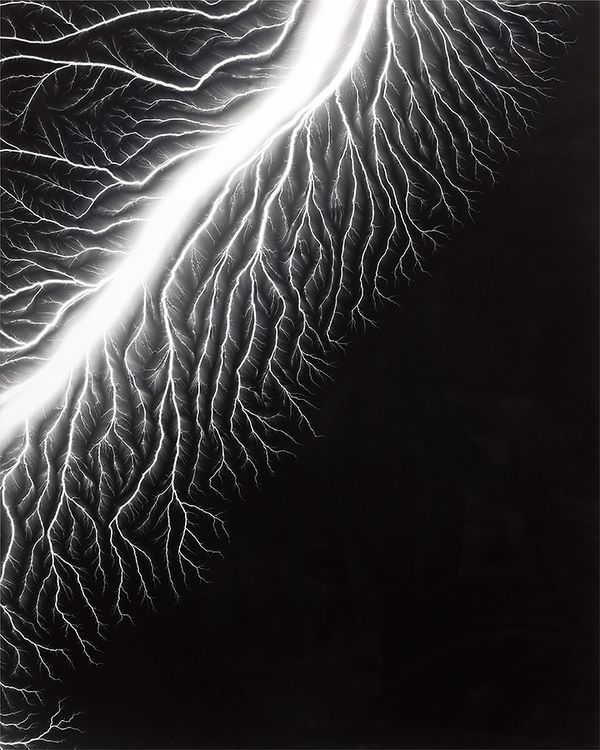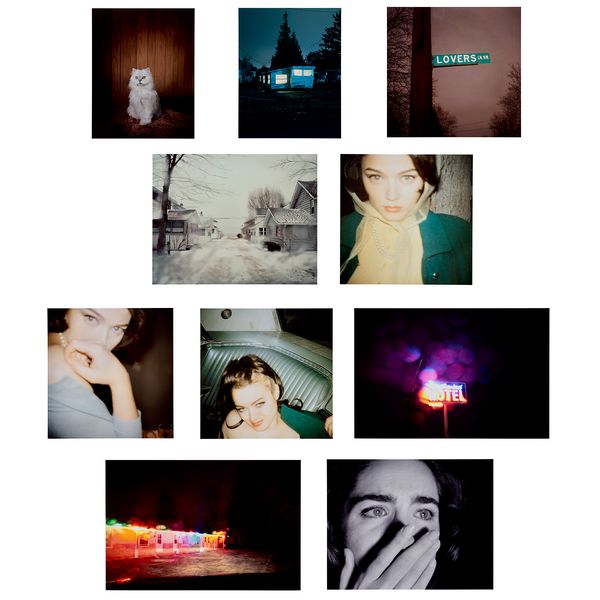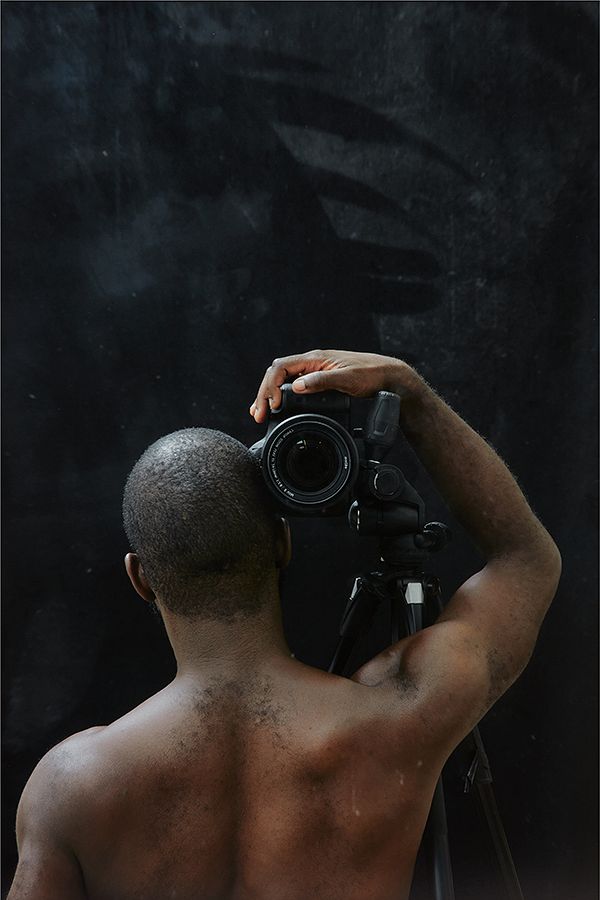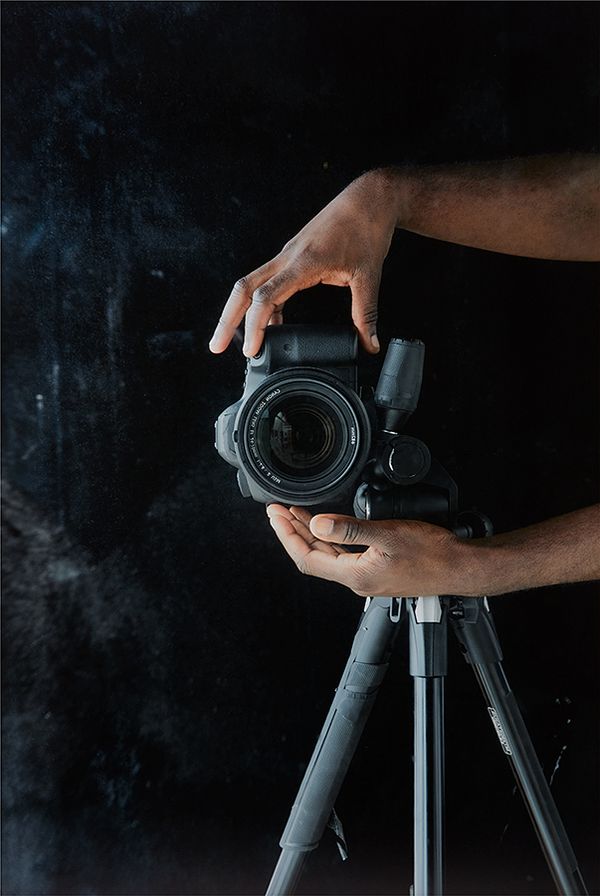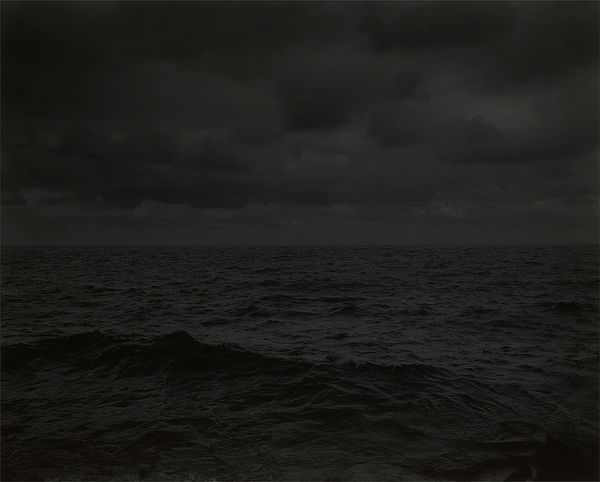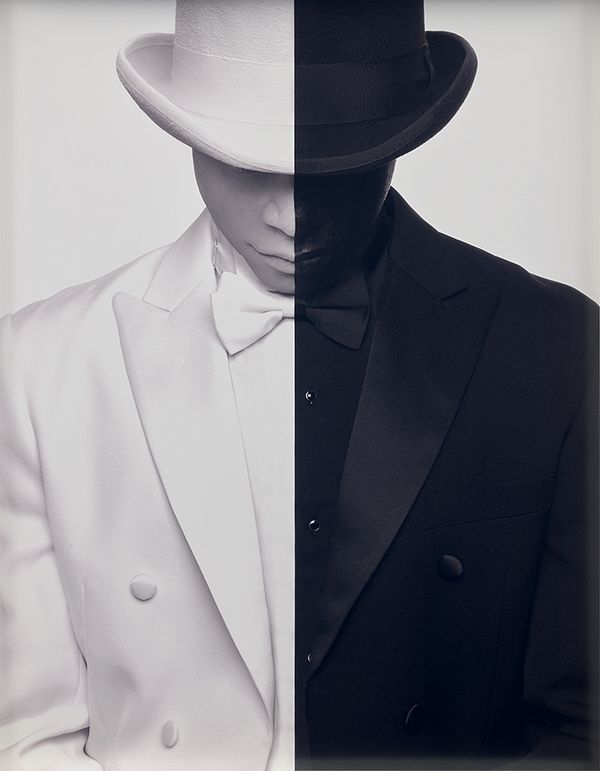Hiroshi Sugimoto, Lighting Fields 128, 2009. Photographs New York.
When Fred and Laura Bidwell began collecting, they had no idea how wide their scope would grow. What started as a personal collection of photography and contemporary art developed over the years into a devotion to community building, philanthropy, and public stewardship. On retirement from the advertising business, the Ohio-based couple was initially driven by the idea of sharing their collection with a wider audience. To achieve this, they acquired and renovated a former Cleveland Railway Company transformer station, turning it into a home for contemporary art in Cleveland’s Hingetown neighborhood.
That vision grew rapidly as Transformer Station became a vital component of Cleveland’s blooming arts community and the neighborhood around the space matured into one of the city’s most thriving cultural districts. Earlier this year, the couple donated the space to the Cleveland Museum of Art (where Fred Bidwell was Interim Director from 2013–2014), who will continue to use the unique space on Cleveland’s West Side to present compelling and unique exhibitions that broaden the offering of the museum’s primary East Side location.
They of course couldn’t stop there, however. In 2018 the couple launched FRONT International: Cleveland Triennial for Contemporary Art — a network of free public art exhibitions that takes place every three years across the greater Cleveland area. The event positions Northeast Ohio as a global cultural hub, partners with local institutions, and supports emerging and established artists through commissions.
Ahead of the New York Photographs Auction on 11 October, where Phillips will offer the 40-lot selection HIGH VOLTAGE: Contemporary Photographs from the Collection of Fred and Laura Bidwell, Fred sat down with us in Cleveland to share the story of he and Laura’s journey.
For Fred, this voracious and visionary path was prompted by an artistic temperament from a young age: “I wanted to be an artist and my parents weren’t really willing to spring for a studio art degree,” he jokes. “Too much like vocational school, right?”
The middle ground was an Art History degree obtained from Oberlin, but his desire to create was persistent. Upon graduation, he worked as a professional photographer for seven years and maintained a studio practice with his free time. Eventually, as his goals and scope in life grew even more ambitious, he began searching for new opportunities, knowing that an industry involving imagery would be most likely to satisfy his visual and creative impulse.
“So I went into advertising,” he says. “But I never lost my interest in photography and art, and advertising is an image-driven business. It gave me great engagement with that.”
Lee Friedlander, New York City, 1966. Photographs New York.
At his first agency job, Bidwell met Laura — herself a graphic designer and painter with a B.F.A. from the University of Akron — and they decided to combine their vision. When they married in 1991, they made a conscious choice to begin collecting, and their initial focus on photography stemmed from a shared love of the medium.
As Fred tells us, their fascination with photography lies in the fact that it’s the single medium that has been in a constant state of technological revolution throughout its existence. “This continues through today with the digital revolution,” he says, adding that the “ability of photography to capture a slice of reality, a slice of time, constantly fascinates me.”
There isn’t just a single vision in the collection, but rather, a fusion of two identities. “We don’t buy anything we don’t both love, and yet we’re different people. Laura is driven more by craft and beauty and I’m more of a conceptual art guy,” Fred remarks. He points us to Hiroshi Sugimoto, highlighting that he is both a meticulous craftsman and an artist who values the materiality of his medium. “The refinement of his work just pervades everything that he does,” Fred notes.
Sugimoto’s 2009 work Lighting Fields 128 demonstrates Fred’s point clearly. It’s a work that explores the intrinsic nature of photography and its unique ability to reveal the invisible, presented here in a striking large-print format. The process of this work recalls the early technique of the Photogram, where images were made by laying objects directly onto a photo-sensitive surface and exposing it to light. In Lighting Fields 128, however, electricity is at once the object and the light.
To execute this work, Sugimoto placed a 7-by-2 ½-foot sheet of film on a metal surface in the darkroom. He then charged a 400,000-volt generator until the air in the room was so palpably electrified that it made the hair on his arms stand up. Then, he touched an electrical discharge device to the film, creating an extremely powerful and dangerous flash of static electricity across its surface. But the result of each powerful blast was invisible until the film was developed. Ultimately, the artist excised what he considered the most interesting segment to an 8-by-10-inch size that was used as a negative to make a photographic print, thus bringing the image to life.
Richard Learoyd, Phie nude front, 2011. Photographs New York.
Compare Sugimoto’s approach to another artist from their collection, Richard Learoyd, who Fred tells us “uses the camera in its most pure form, a camera as large as a room.” He continues: “The light that is reflected off the subject is embedded in the actual print — there’s no negative interface at all. So, in that way it’s high concept, but also very material and lush and beautiful with sorts of details that are microscopic in nature.”
Barbara Probst, Exposure #99: N.Y.C., 401 Broadway, 02.17.12, 6:38 p.m., 2012. Photographs New York.
A focus on the innate characteristics of photography is further apparent in the work of Barbara Probst, who approaches this idea through a subversion of the lens’ singular viewpoint. By placing cameras at different vantage points and remotely triggering the shutters of each simultaneously, she invites us to consider the medium’s relationship to subjectivity, reality, and individual perception.
Todd Hido, Excerpts from Silver Meadows, cira 2013. Photographs New York.
Though their collection follows several thematic paths simultaneously, their collecting has been intuitive and incredibly diverse in scope. As Fred notes, the collection can range “from classic mid-century artists like Lee Friedlander or Stephen Shore — who are reinventing photography and how we look at America through its streetscape and infrastructure — to photographers like Todd Hido, who use photography cinematically to tell stories.” Further, the collection includes works that investigate themes of identity and self-representation through works like Zanele Muholi’s Bona, Charlottesville (97810) from the artist’s series Somnyama Ngoama (Hail the Dark Lioness). In this series, the activist artist places themself within the image as both subject and image-maker, alluding to the broader history of colonization and enslavement. In turn, Muholi calls upon us to question our preconceived notions of beauty.
Zanele Muholi, Bona, Charlottesville (97810) from Somnyama Ngoama (Hail the Dark Lioness), 2015. Photographs New York.
Heightening these themes in the selection are prints from Paul Mpagi Sepuya’s Darkroom Mirror series. In these works, Sepuya also presents himself as both creator and subject, exploring the performative nature of the photographic space as it relates to the Black queer experience. To that end, the works probe both the cultural significance of photography and themes around identity and representation all at once.
Paul Mpagi Sepuya, Darkroom Mirror Study or Aperture 0X5A3449, 2017. Photographs New York.
Paul Mpagi Sepuya, Darkroom Mirror Study (0X5A2203), 2017. Photographs New York.
On the depth of their collection, Fred offers that “in some ways collectors who are not trained in museums can have the freedom to really think a little more out-of-the-box than a curator who really has a mandate to place everything in a collection within a narrative of art history. We’re not constrained by that.”
The Bidwells have taken an equally unconstrained approach in their support of contemporary artists by acquiring of many works directly from the creators and commissioning new work through their various cultural initiatives. One such work is Dawoud Bey’s Untitled #25 (Lake Erie and Sky), commissioned by FRONT International and shown at the inaugural edition of the event. The work is from Bey’s series Night Coming Tenderly, Black, which recreates the experience of fugitive slaves who made their way along the Underground Railroad to freedom in Canada. There’s a particular poignancy to this photograph, as Lake Erie was one of the last obstacles that many enslaved people encountered. Rather than documenting sites along the Railroad’s route, the series astutely captures the feeling of the landscape they saw with the exceptional tonal depth of the gelatin silver print process.
Dawoud Bey, Untitled #25 (Lake Erie and Sky) from Night Coming Tenderly, Black, 2017. Photographs New York.
Even with all they have accomplished as collectors, philanthropists, and entrepreneurs, the Bidwells are looking forward to the prospect of continued cultural leadership. In turn, the proceeds from the sale of these works will support their active philanthropic endeavors.
“Everything Laura and I have done in our collecting and in our work in arts and culture has been an experiment. And the fact that we’re selling some works from our collection is an experiment as well,” Fred tells us. He adds that it’s exciting to offer other collectors the opportunity to be part of the life cycle of the works in their collection.
Hank Willis Thomas, Baron of the Crossroads, 2012. Photographs New York.
But just how did the Bidwells’ initial experiments with collecting grow into all they’ve achieved? And why not make a grandiose public announcement of what’s next in the couple’s plans? Considering the monumental success of their public initiatives and private collecting, surely anything would be possible for them.
“For the things that you really care about, I think you should throw out the plan,” Fred said in his 2016 TedX presentation at Cleveland State University, just three years after founding Transformer Station. “Not because a plan couldn’t help you reach your goal, but because that goal would be too small, too limiting.”
Perhaps, just as it was impossible for the couple to stick to their initial plan of building a modest personal collection, it’s impractical now for them to convey precise future plans. Because the scope of Fred and Laura Bidwell is simply limitless.
Discover More from Photographs New York >
Recommended Reading
